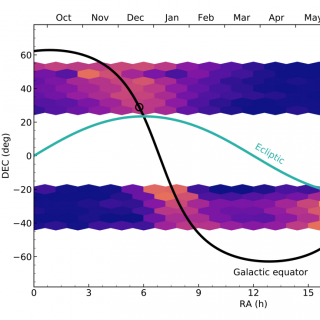
Natural Night Sky Brightness during Solar Minimum
In 2018, Solar Cycle 24 entered into a solar minimum phase. During this period, 11 million zenithal night sky brightness (NSB) data were collected at different dark sites around the planet, including astronomical observatories and natural protected areas, with identical broadband Telescope Encoder and Sky Sensor photometers (based on the Unihedron
Miguel R. Alarcón et al.
Advertised on:
6
2021